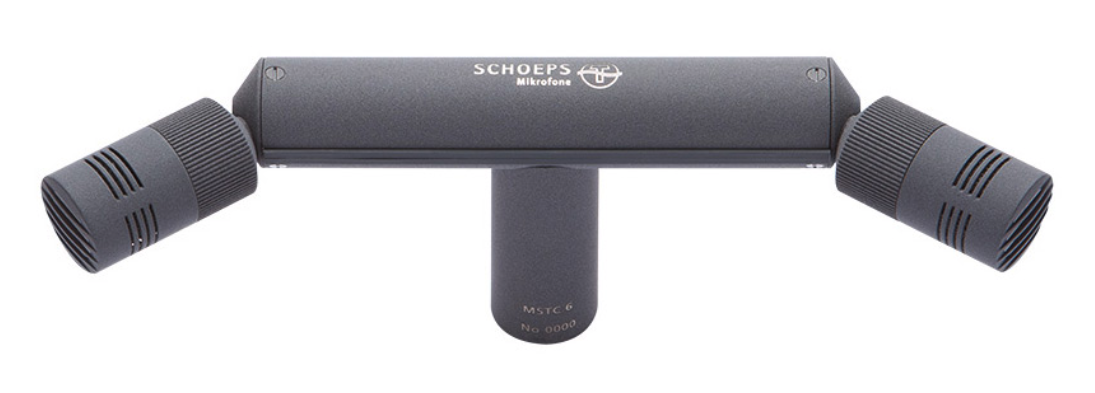STEREO PRINCIPLES
© Brian Heller <www.WhatTheHeller.com>

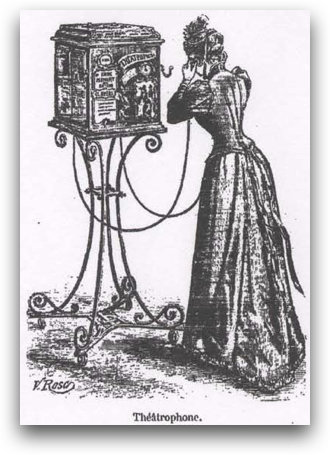
Stereo
- Must have two independent channels
- Space, depth, dimensionality = Immersive
- Triangulation of our senses with an object (sight or sound)
- The real magic happens in the brain, not the technology
Visual Stereopsis

Are the images identical?

Psychoacoustics
-
A psychoacoustic effect that makes a sound source appear where there is no speaker.
-
Differences between two mics/speakers create a left/right stereo soundstage.
-
Imaging is the term used to describe how a recording uses the soundstage– space and depth; it is another specific aspect to listen for.
-
Localization = How precisely the brain can pin-point where a sound is coming from.
The Phantom Image
Psychoacoustics
The Phantom Image
Orchestra
Narrow
(mics too close together)
Wide
(mics too far apart)
Psychoacoustics
-
Amazingly complex!
-
Localization = How precisely the brain can pin-point where a sound is coming from
How We Hear Direction
Psychoacoustics
Headphones...
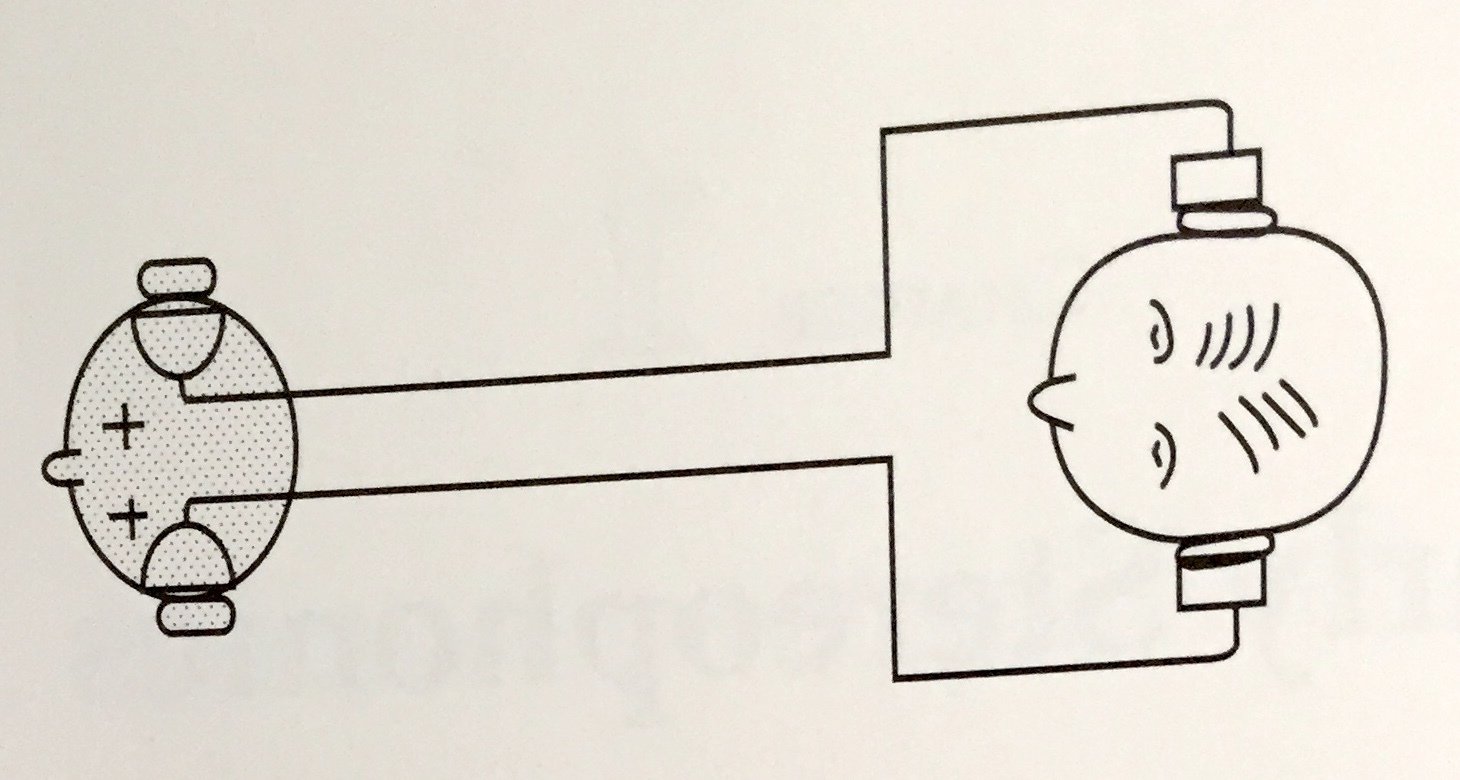
...are Not Speakers!
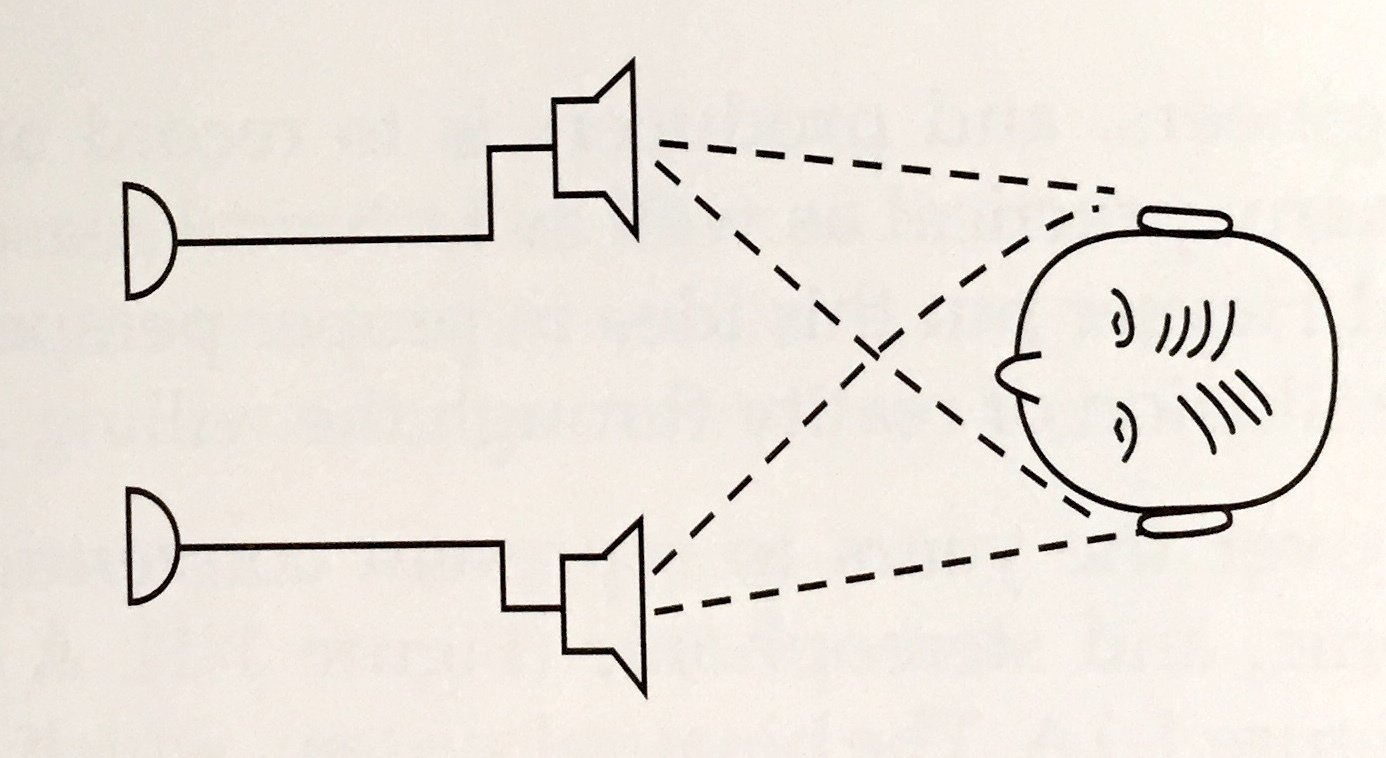
Intensity Stereo
Sound arrives at exactly the same time at each mic, but at different amplitudes.
Coincident Mic Setups
X/Y:
2 Cardioids @ 90-degrees
Two identical mics as close together as possible.
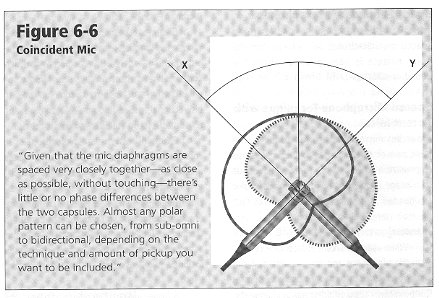
X/Y:
2 Cardioids @ 90-degrees
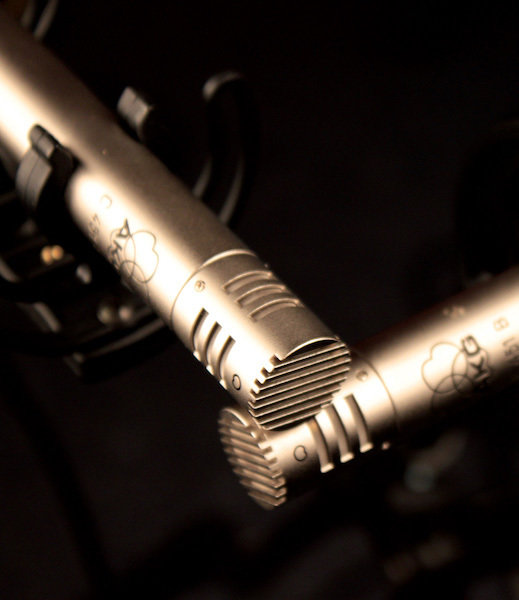
X/Y:
2 Cardioids @ 90-degrees
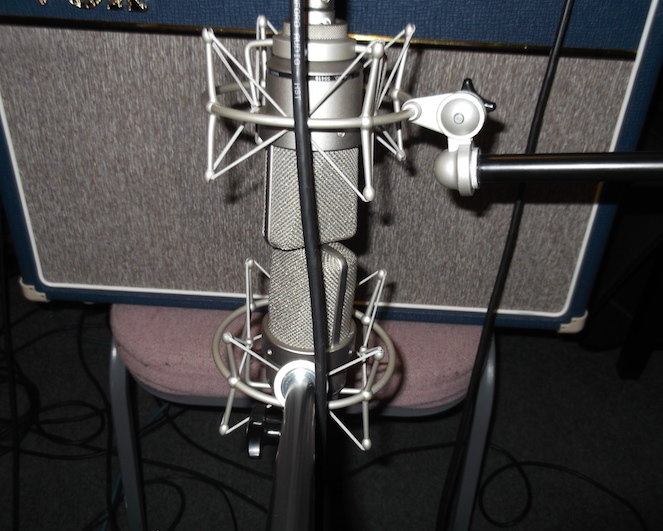
X/Y:
2 Cardioids @ 90-degrees
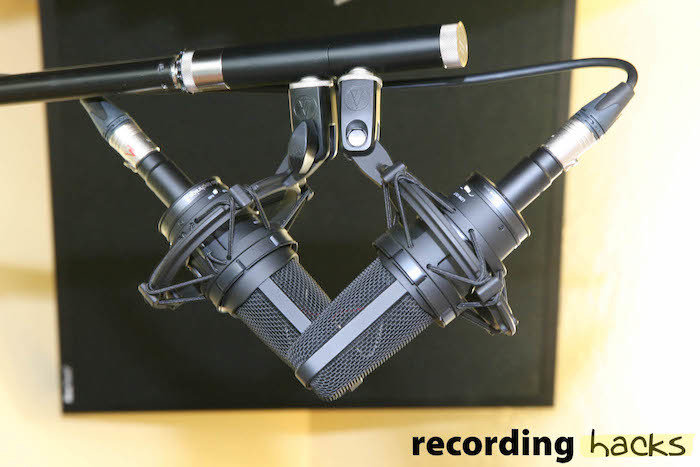
Blumlein
2 Bidirectionals @ 90-degrees
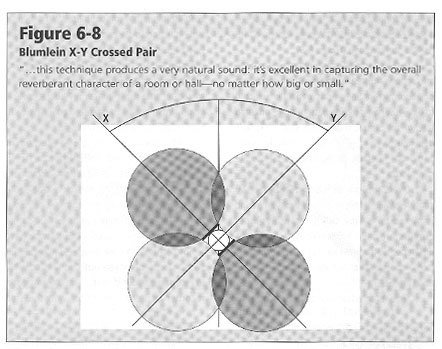
Blumlein
2 Bidirectionals @ 90-degrees
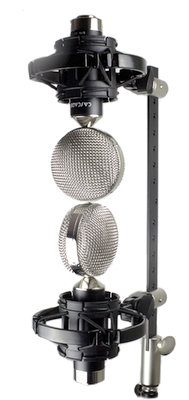
Intensity Stereo
- Good imaging in many different situations
- Undramatic stereo spread (but can still have a nice soundstage)
- Can be a little "flat" sounding sometimes, but minimizes room sound
- Best mono compatibility (no phase problems, as sound has the same arrival-time at each mic)
Characteristics
Sound arrives at exactly the same time at each mic, but at different amplitudes.
Time-of-Arrival Stereo
Sound arrives at about the same amplitude, but slightly different times at each mic.
- When the ear hears two sounds at the same loudness very close together (within about 30 ms), the brain interprets them as a single sound, coming from the direction heard first.
- The difference between a sound imaging in the center of the soundstage vs. imaging from the side depends on which got to the ear first.
The Precedence Effect
The Precedence Effect


Spaced Mic Setups
A/B:
2 Omnis Spaced According the the 3:1 Rule
Distance between the mics should be 3x their distance from the sound source to minimize phase problems.
A/B:
2 Omnis Spaced According the the 3:1 Rule
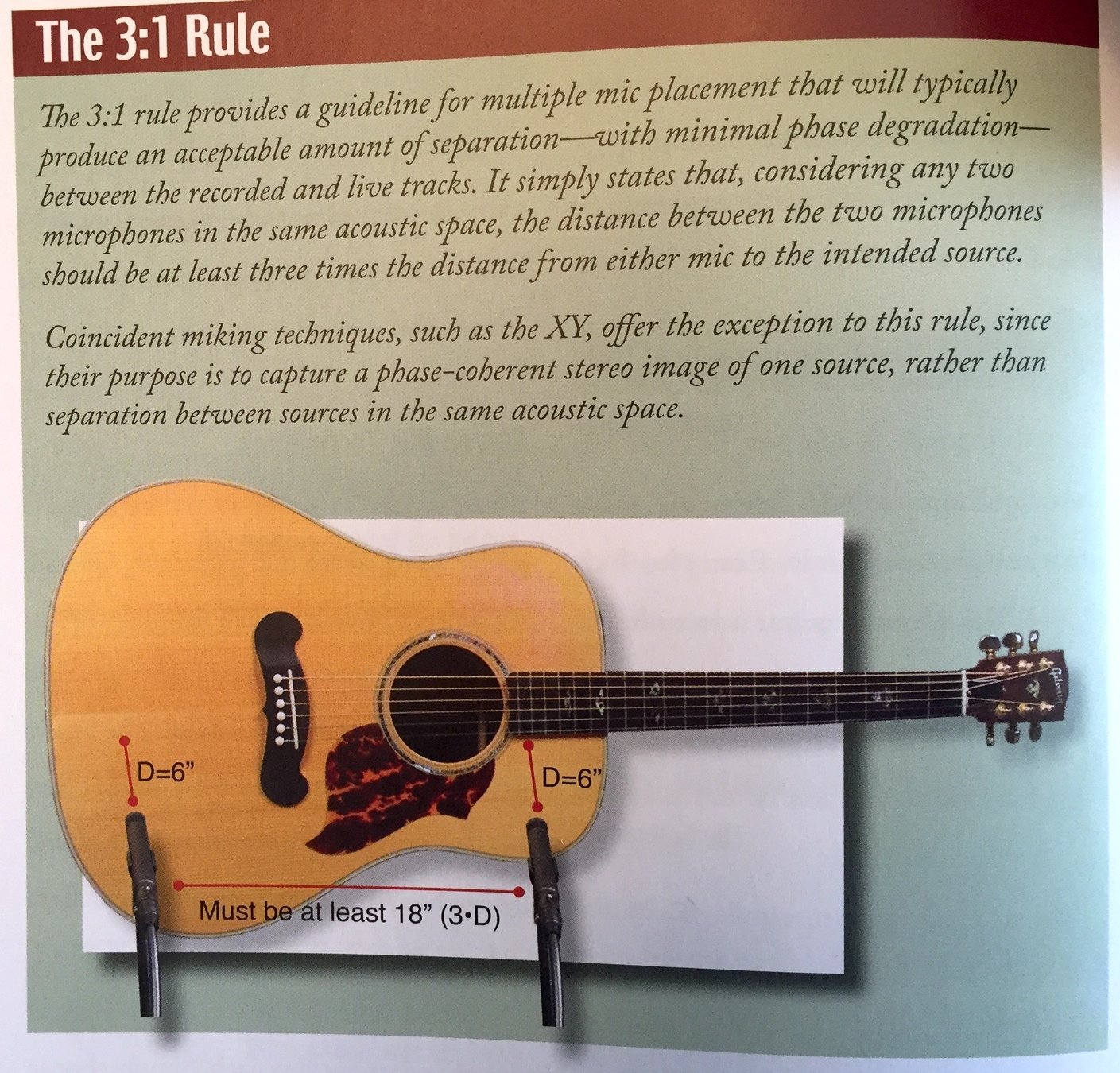
A/B:
2 Omnis Spaced According the the 3:1 Rule
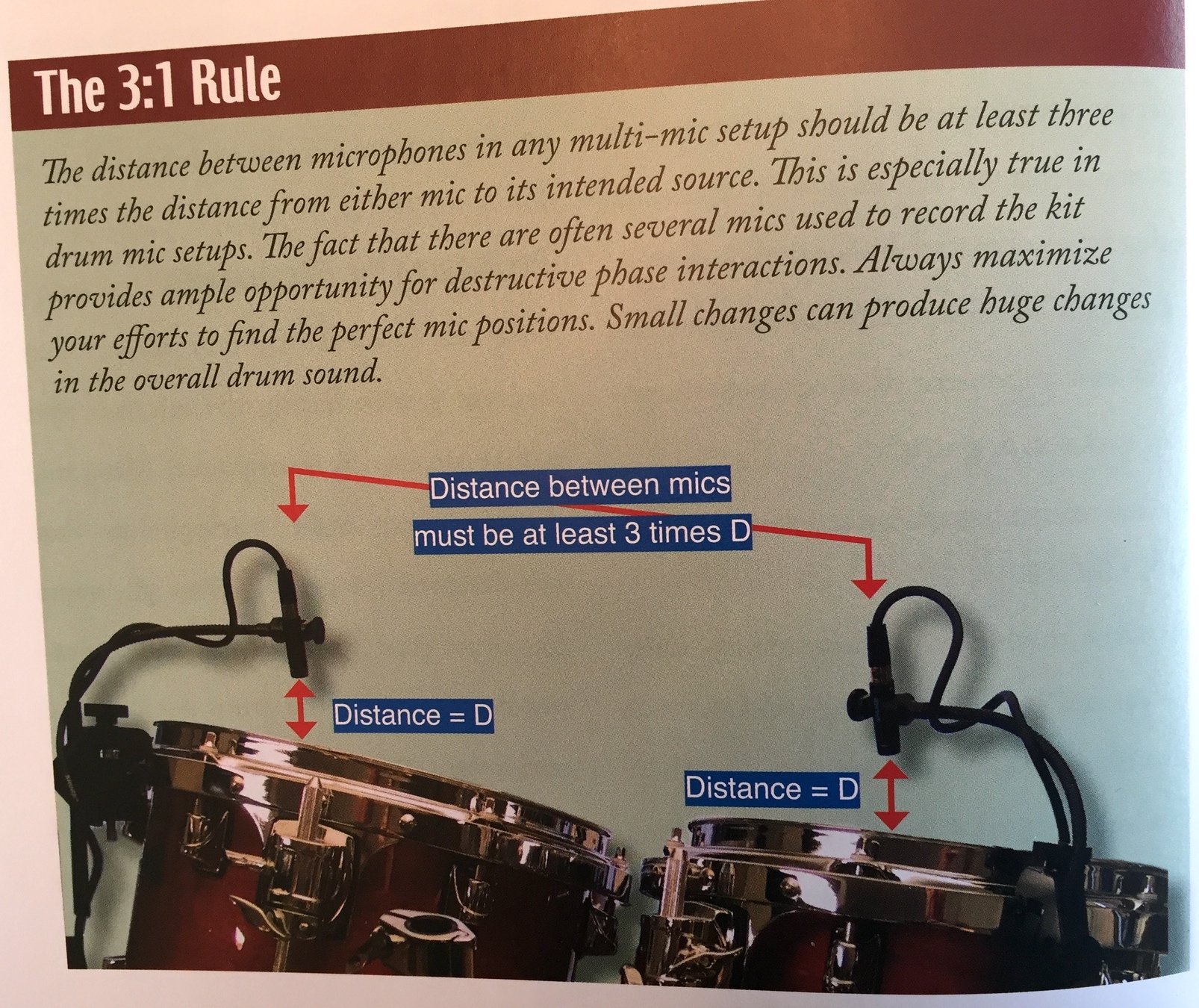
A/B:
2 Omnis Spaced According the the 3:1 Rule
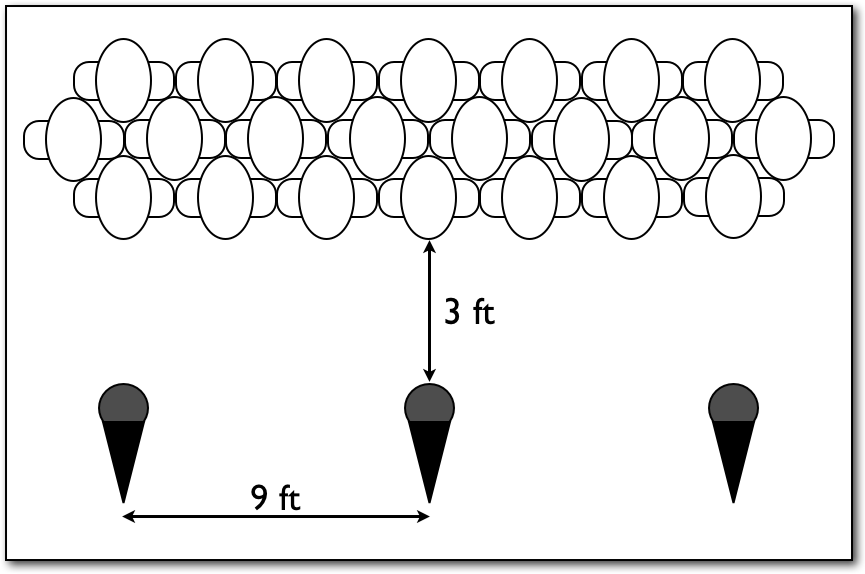
A/B:
2 Omnis Spaced for Larger Groups
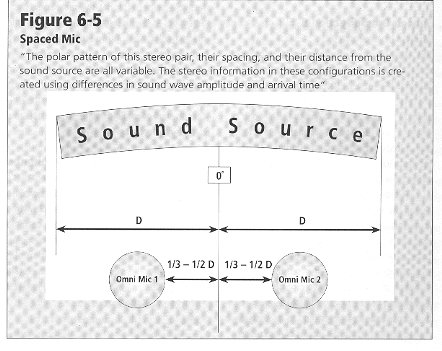
Time-of-Arrival Stereo
-
Preferred for larger groups in better rooms
-
Less precise localization, but best overall blend
-
Widest stereo spread & most depth
-
Potential for mono-compatibility problems, as sound arrives with different phase at each mic
Characteristics
Sound arrives at about the same amplitude, but slightly different times at each mic.
Near-Coincident Mic Setups
ORTF:
2 Cardioids @ 17 cm & 110-degrees
Two identical mics closely spaced.
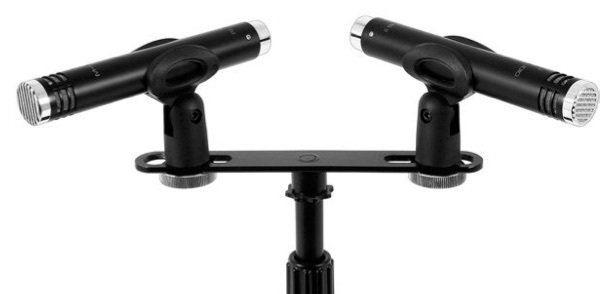
ORTF:
2 Cardioids @ 17 cm & 110-degrees
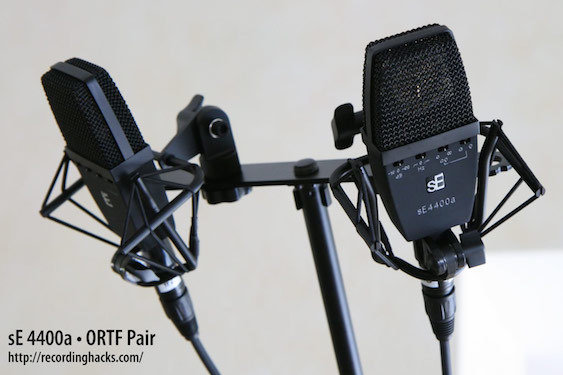
Binaural:
Dummy-head with mics in the ears. Can give an enhanced spatial effect through headphones, but not speakers.
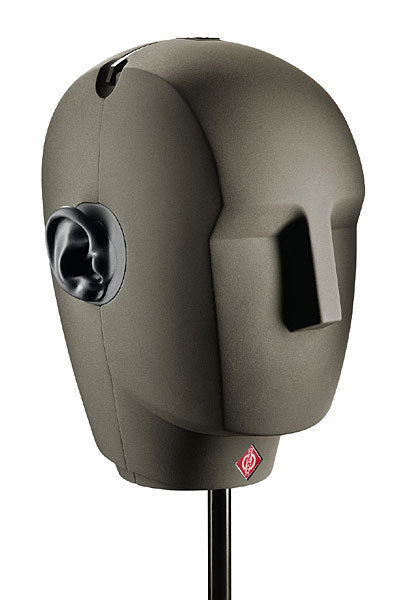
Stereo Microphones
A stereo mic is simply 2 matched capsules mounted together in a single body. They have the same characteristics and features as other mics– just more convenient, but less flexible.


